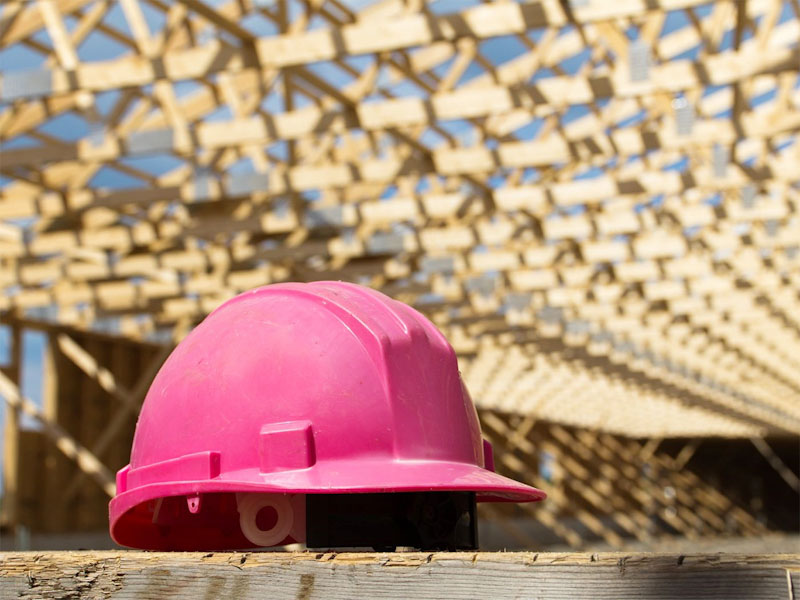Protecting Female Construction Personnel From Sexual Harassment and Jobsite Injury
By GEORGE DRAPEAU III – March 24, 2023
TARRYTOWN, NY—The percentage of women construction workers is at an all-time high, according to data from the Bureau of Labor Statistics. That level has ticked up recently since 2016 when there were approximately 800,000 women employed in the U.S. construction industry.
Today, women make up 14% of the industry’s workforce, according to an analysis by The Washington Post. The report looked back to 2009 when 13.5% of the construction industry’s workforce were women.
More than 200,000 of them wear hard hats, and work (mostly) as laborers and helpers, painters, carpenters, repair workers, electricians, drywall installers, truck drivers, HVAC mechanics, plumbers, and flaggers. In addition, more than 600,000 women work in administrative and office positions in construction businesses.

According to Thomas H. Welby, Esq., who serves as general counsel to the Construction Industry Council of Westchester & Hudson Valley, Inc., there are many nuts-and-bolts health and safety issues that affect women working in the trades. He also noted that there are serious issues of the mistreatment of women in the industry, which occur both on the jobsite and in the office.
Sexual harassment in construction is a serious issue, he noted, writing for CONSTRUCTION NEWS. It ranges from being stared at or seeing “pinups” of unclothed women in the job trailer, to unwanted sexual remarks, lewd acts, inappropriate touching, and outright sexual assault. (Mr. Welby served as a long-time columnist on safety matters for this monthly publication.) A USA Today analysis of EEOC and Bureau of Labor Statistics data in 2018 suggested that construction is the #2 industry in the country (behind mining) for the number of reported incidents of sexual harassment reported per thousand employees.
“For some years, construction-industry organizations and employers have worked to increase the numbers of women working in the construction trades, as well as in management,” Mr. Welby noted. “The results of these efforts have been valuable, but, on the whole, somewhat disappointing.”
Turning to some of the nuts-and-bolts safety matters, the primary causes of death for women in construction are “struck-by” incidents. These can be flaggers struck by vehicles and other transportation accidents, homicide and falls.
In a male-dominated industry like construction, one size does not fit all. A widespread problem for women has long been the lack of PPE (personal protective equipment) in the smaller sizes generally needed to fit women. The “protective” can vanish from “PPE” if the respirator or protective clothing is too large or does not fit properly. A respirator that doesn’t fit is virtually useless. Too-large safety vests can be caught on door handles, causing workers to be jerked backward into the door or be the cause of a fall. Safety footwear that is too large can cause trips and falls. Too-large clothing items can get snagged in equipment, resulting in serious injury.
Jessica Bunting, research practice director for CPWR, for the Center for Construction Research and Training, said an informal survey of 174 tradeswomen found that 77% had been exposed to a hazard unnecessarily because of ill-fitting PPE. The causes of top hazards are attributed to ill-fitting fall-protection harnesses, respirators and safety goggles. Debris or chemicals can more easily get into eyes and airways, it was noted in a report published in ConstructionDIVE.
“Procuring PPE items in sizes that will fit smaller women will often require extra effort,” Mr. Welby added. “Some items are not regularly stocked by distributors, and others may not be widely manufactured in the United States (where people tend to be on the large side). One resource is the International Safety Equipment Association, which lists companies and suppliers offering PPE, sized and designed for women.”
Women suffer higher rates of sprains/strains and nerve conditions of the wrist and forearm than men, noted Mr. Welby. “The cause of this is not fully-established, but it may be a product of women, typically having less upper-body strength than men, being more commonly assigned repetitive tasks leading to sprains/strains and nerve conditions. Where women are expected to keep pace with their male counterparts in lifting heavy objects, back injuries are common as well.”
Prolonged standing has been linked to premature births, and strenuous activities, such as lifting and climbing, can be hazardous during the latter stages of pregnancy. “We think it qualifies as a ‘reproductive hazard,’ too, that few construction employers offer pregnancy, family and medical leave to their employees,” Mr. Welby wrote in a co-bylined article in April 2018.
Mr. Welby concluded, “As to both sexual harassment and more mundane issues where women’s health and safety are at risk, all construction employers have both legal and ethical obligations.”
